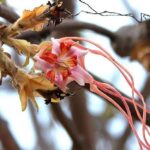Two types of carrying baskets were used during my stay with the Mentawai people at Buttui on Siberut Island. One, locally called Opa, was fully enclosed on the sides and had an open rattan bottom. The other type was entirely woven from rattan vines and is locally called O’orek.
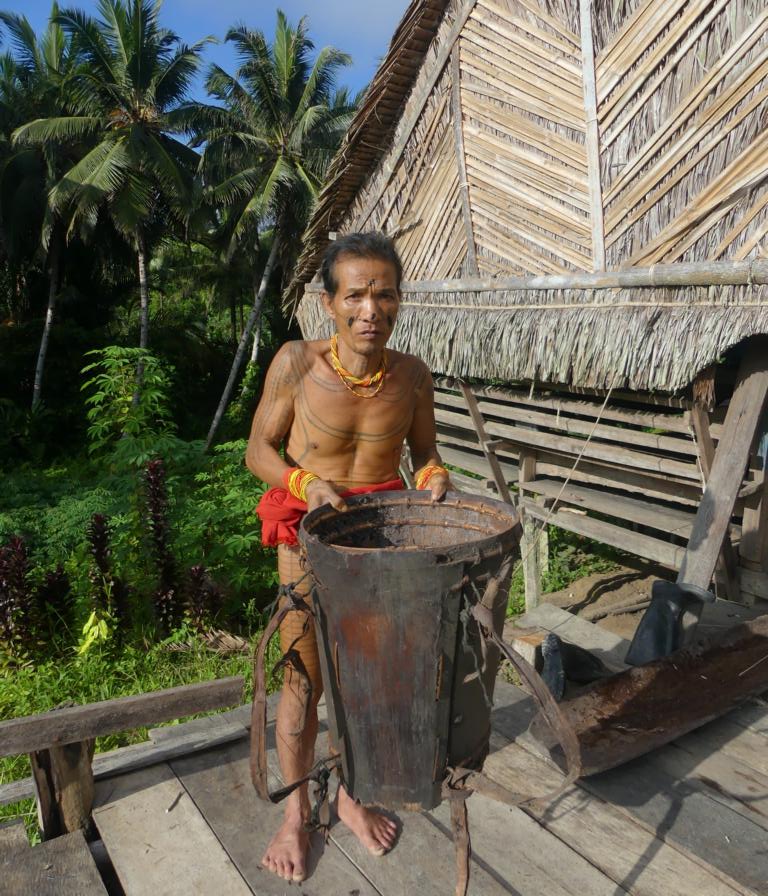
Sago leaf sheath basket, locally called Opa
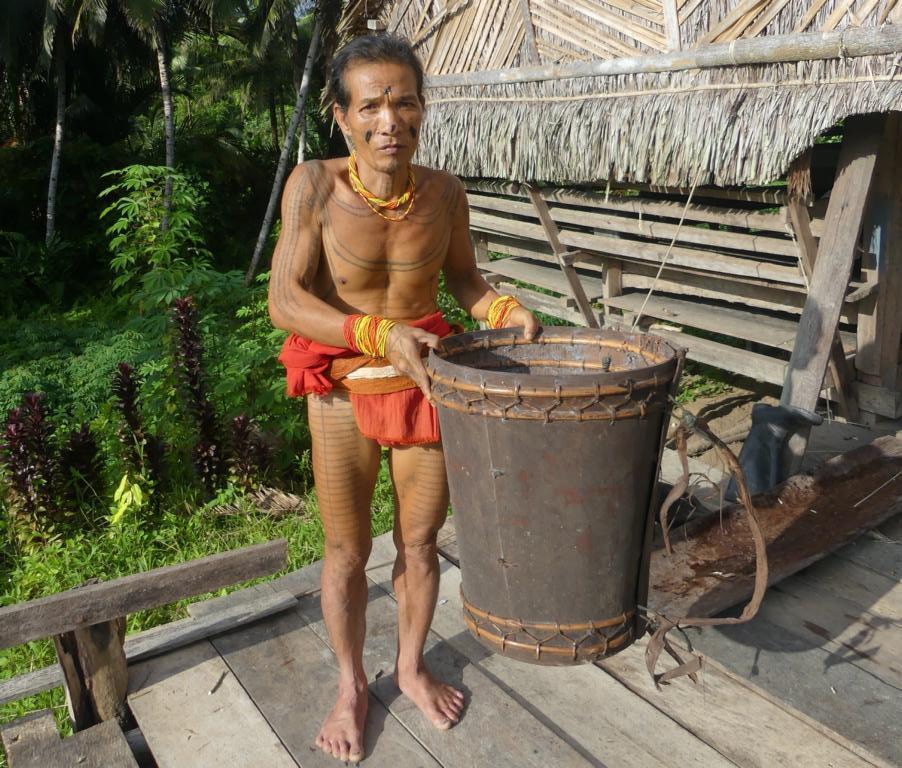
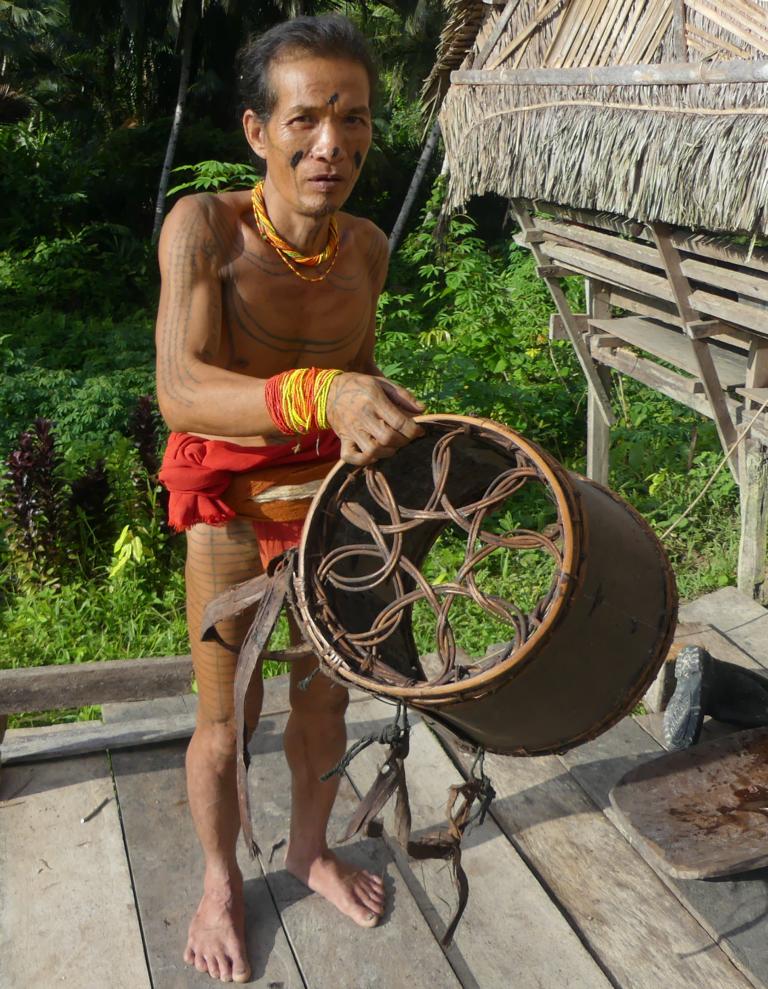
Four sago palm leaf sheaths were sewn with rattan vines for this Opa basket. And the side with the backstraps was reinforced by one more sago leaf sheath. The basket was conical and reinforced on the upper rim and the bottom with a double string of Pelege rattan vines (Calamus javensis). The bottom itself was loosely woven with the same rattan species. These openings at the bottom are significant, meaning this Opa basket mainly carries lightweight materials.

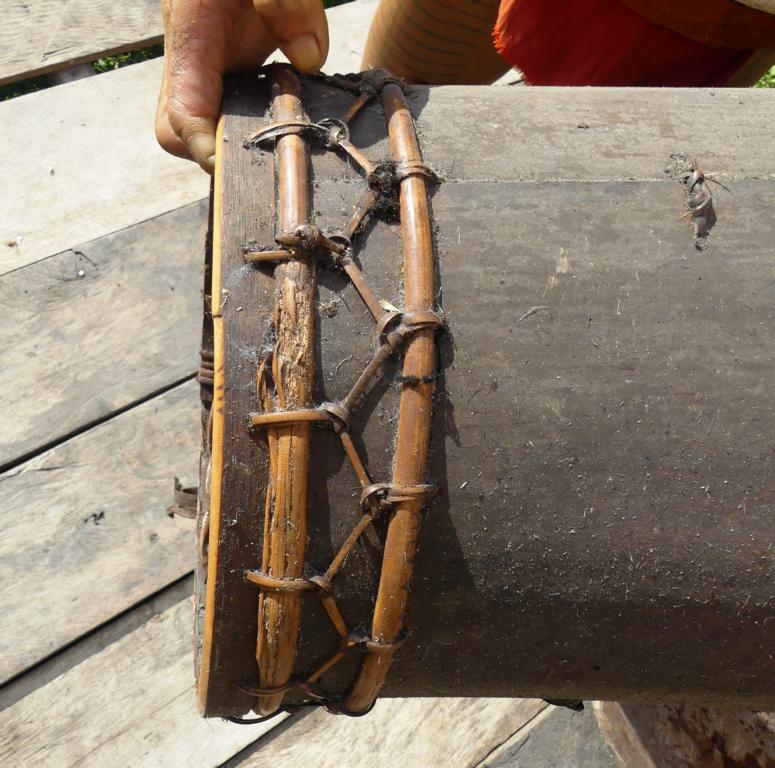
One afternoon, I went with Aman Aru into the forest and had to carry this basket. And there, I saw what precisely this basket was intended for. Aman Aru was cutting various leaves, herbs, and reeds for a ceremony in the evening. And he put all of these cut greeneries into my basket, which was starting to overflow after a short time. I had to be careful not to smash or harm any leaves, as all of them were needed for the ceremony. So, the leaves and other greeneries were protected from the side when slithering through the dense forest. They could not fall through the bottom openings, and the basket was lightweight – an ingenious invention.
Rattan basket, locally called O’orek
O’orek baskets are entirely woven from Calamus javensis rattan vines collected in the surrounding forests. Women use this type of basket to transport agricultural products, like taro roots, banana bunches, bamboo shoots, etc. Most of these baskets are crafted by persons outside the forest who specialize in whittling and weaving various basket types. These include roigen (chicken coop baskets), soso (small fruit-holding baskets), and rattan crafts.
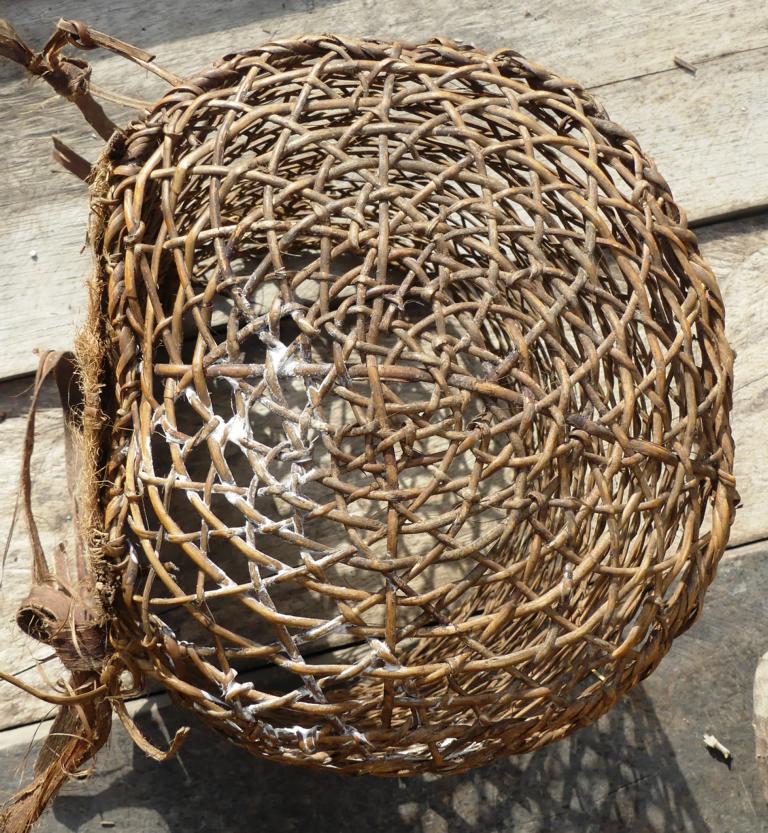
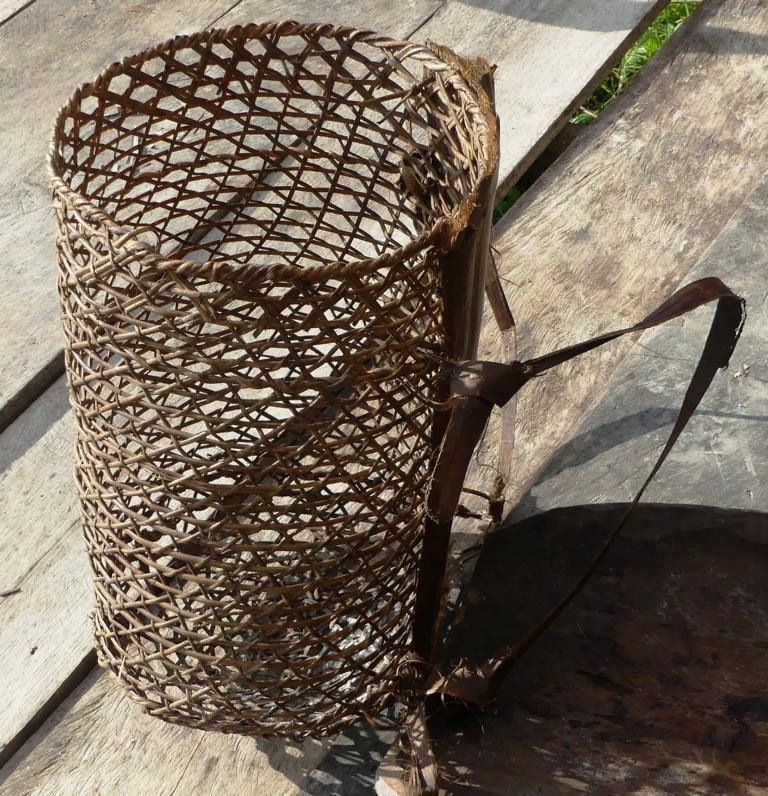
O’orek baskets are about 70cm / 28‘’ high with an inner diameter of about 40cm / 16’’. Carrying straps are made from the bark of the ‘Baiko’ tree (Artocarpus elasticus). That is the same material as it is used for bark loincloth. A leaf sheath of a sago palm covers the backside of the basket.

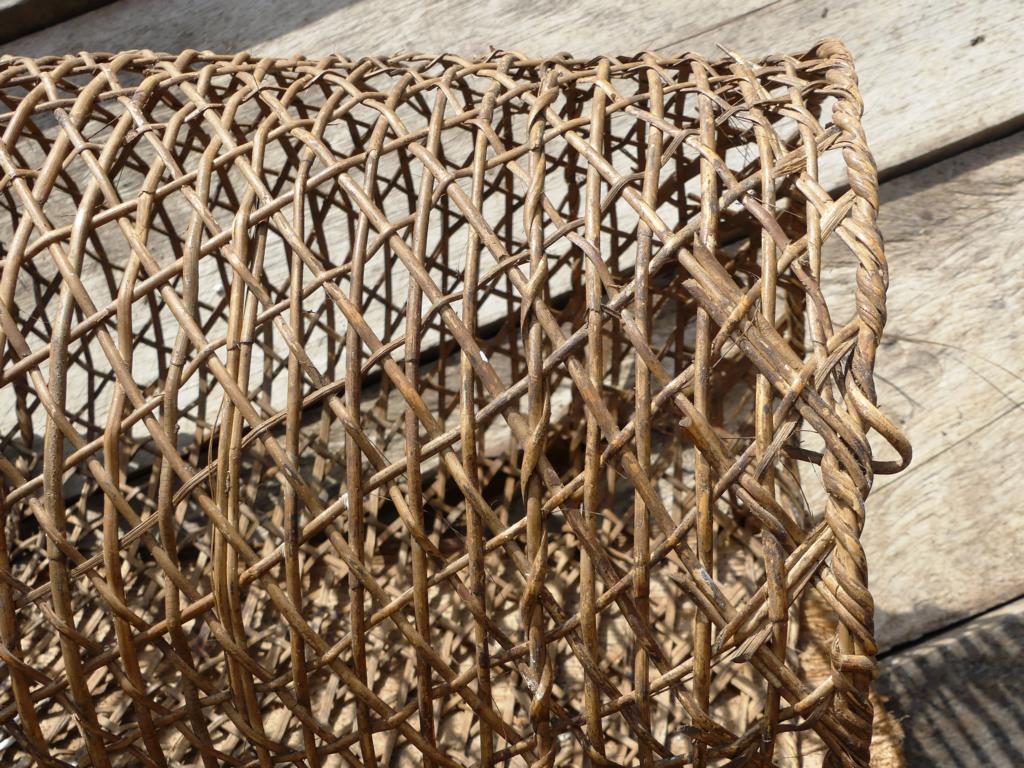
For a basketry craftsman, it takes about two to three days to build one O’orek rattan basket. The cost for the buyer will be around IDR 100k/piece (about 6.4 USD/pc as of Oct 2018).
Lessons learned about carrying baskets of Mentawais:
- The Mentawai people use two different types of carrying baskets.
- One type, called Opa, is mainly used for collecting and transporting lightweight greeneries.
- The other type is entirely woven from rattan and used to transport taro roots, banana bunches, and other agricultural goods.
- Both baskets use a sago leaf sheath to protect the back of the carrier.
- Backstraps are made from the stringy fiber of Artocarpus elasticus trees.
.



